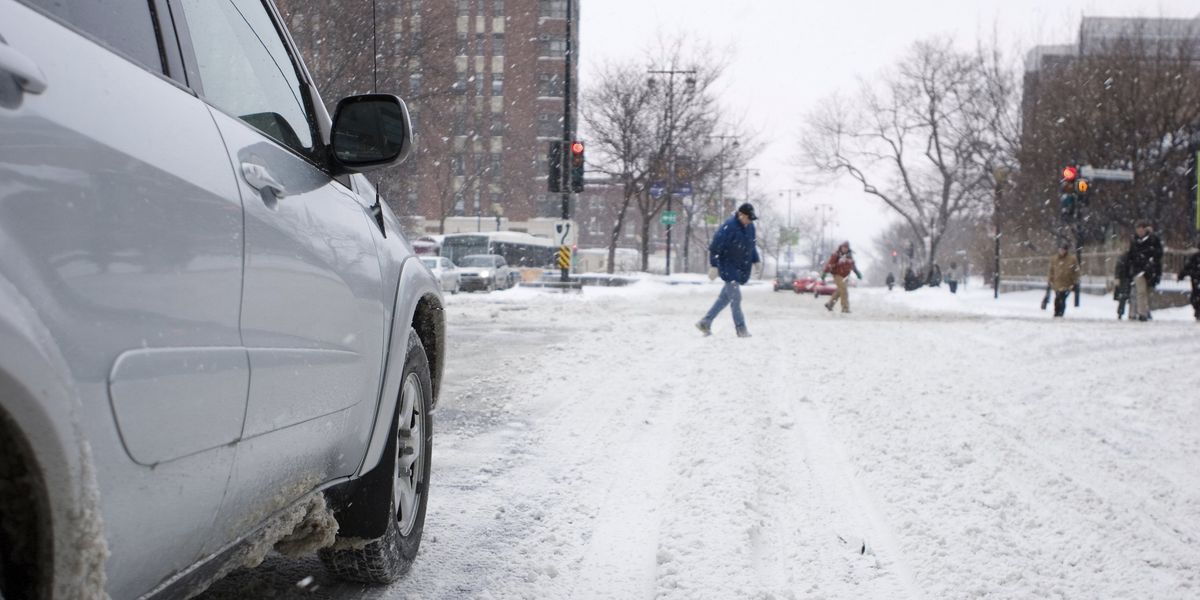Montreal just got hit with a serious blast of snow, and plenty of drivers are now eyeing their untouched winter tires with regret.
December 1 is coming quick, and the Government of Quebec’s winter tire requirement is firm: most drivers need to make the switch or risk heavy fines.
There are, however, a few exceptions. While the rule applies to almost everyone on the road, a handful of vehicles are legally exempt, and a few situations come with short grace periods that let you drive without winter tires a little longer. With winter arriving ahead of schedule, it is worth knowing exactly who needs to make the switch and who does not.
It is also worth remembering why the SAAQ recommends installing winter tires well before the legal cutoff, especially when temperatures in Montreal have already dipped into the zone where all-season tires stop gripping properly.
Here is what drivers need to know as the deadline approaches.
Who does not need winter tires in Quebec?
A small number of vehicles are exempt from Quebec’s winter tire requirement, which remains in effect until March 15. The SAAQ lists the following categories:
• Heavy vehicles weighing 4,500 kg or more
• Tool vehicles
• Farm machinery
• Motor homes
• Trailers
• Spare tires
• Motorcycles used as emergency vehicles
The law applies only to vehicles registered in Quebec. Cars from Ontario, the United States or elsewhere are not subject to Quebec’s rules.
Who does not need to obey the December 1 deadline?
There are also situational exceptions. Drivers who buy a new vehicle from a dealership are given a seven-day grace period before they are legally required to install winter tires. The same seven-day window applies at the end of a lease lasting at least 12 months. Vehicles with dealer plates (X plates) are exempt, as are vehicles with temporary registration certificates that are valid for up to seven days.
The SAAQ is responsible for issuing exemption certificates for any drivers who qualify.
Why it’s smart to switch before December 1
Quebec’s legal deadline is fixed, but winter weather is not. The province saw its first major snowfall this week, and temperatures have already dipped into the zone where all-season tires stop performing well.
Meteorologists say temperature should be your cue. Once conditions drop below 7 °C, winter tires offer much better grip because of the rubber compound used to make them. Certified winter tires stay flexible in deep cold, all the way down to about minus 40 C, which helps with traction and braking on icy roads.
All winter tires must bear this symbol. SAAQ
The SAAQ also encourages drivers not to wait until the last week of November since cold snaps often arrive early and garages tend to fill up quickly.
Other things to check before winter settles in
If you are heading to the garage for a tire change, the SAAQ recommends getting a basic winter tune-up. That includes checking your battery, brakes, wipers, fluids, defrost system, belts and headlights.
For anyone buying used tires, tread depth is important. It should be at least 4.8 mm, or 6/32 of an inch, across the width of the tire. Drivers should also verify the manufacturer’s date since older tires harden with time and lose their effectiveness on ice and snow.
Whether we like it or not, winter weather is already here, even if the deadline is not. Switching early is almost always the safer choice.












